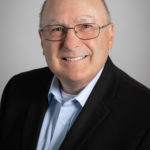HOWARD STRASSLER, DMD
Your patients are surely up to speed on controversial dental news reported in the popular press. You need to be, too.
WE’RE CONSTANTLY educating our patients about how to avoid dental problems: regular recall exams, radiographs, prophies. Chairside questions are inevitable, of course, particularly when patients have read something that confuses or alarms them. Last summer, for whatever reason, brought a flood of such news.
A headline in the New York Times in August seemed counterintuitive: SURPRISINGLY LITTLE EVIDENCE FOR THE ACCEPTED WISDOM ABOUT TEETH. Many of the age-old tactics we’ve gone hoarse recommending to our patients, this story posited — the benefits of flossing, routine timed X-rays, how often to brush — is no longer necessarily supported by the clinical evidence.
Many of these assertions, it turns out, were based upon Cochrane reviews, formerly Cochrane Collaboration reviews — an independent, nonprofit, nongovernmental organization made up of a global network of researchers, professionals, patients, caregivers and people who are simply interested in health and medicine. Considered the platinum standard, Cochrane was founded in 1993 to organize medical research according to the principles of evidence-based medicine.
The summer flurry of medical thinkpieces in the media continued unabated, with many offering some variation of “You probably don’t need dental X-rays every year. For many people, it’s a needless expense that carries needless risk.” The next month, the Times had joined the chorus, asking DO KIDS NEED DENTAL X-RAYS? and maintaining that dental experts say the very concept of the routine X-ray is passé.
Have you heard about dentistry’s new magic bullet, silver diamine fluoride? In July, the New York Times (I have a love-hate relationship with medical coverage like this) described it as “a cavity-fighting liquid [that] lets kids avoid dentists’ drills.”
We all know the ALARA acronym about radiation safety: as low as reasonably achievable. Patients no less than dentists know that radiation exposure is cumulative and can cause a parade of horribles including cancer and birth defects. Then came the counterintuitive to counter the original counterintuitive, in the form of an August headline in the Wall Street Journal: IS A LITTLE RADIATION SO BAD? The writer of this essay argued that what is known as “linear no-threshold” (LNT) — the notion that any radiation increases cancer risk — needs a rethink. A panel of scientists, the article noted, have filed a petition with the Nuclear Regulatory Commission to review the current LNT model; the situation bears watching. Remember, your patients are reading these articles, and their mental wheels are in motion.
Next: Have you heard about dentistry’s new magic bullet, silver diamine fluoride? In July, the New York Times (yes, again; I have a decided love-hate relationship with pieces like this) described it as “a cavity-fighting liquid [that] lets kids avoid dentists’ drills.” Silver diamine has indeed been cleared by the FDA for helping manage hypersensitivity, and using it for children would be a common off-label use in a dental practice. The University of Maryland, where I teach, uses it for both children and in geriatric clinical situations with root caries. One of its downsides: discoloration and even blackening of the tooth structure. Research continues; stay tuned.
Finally, toothpastes and antimicrobials have made news lately, especially regarding the FDA’s September ban on triclosan and other chemicals from soaps, while letting it remain in Colgate Total. This, naturally, alarmed many patients. Crest, taking advantage of questions about a rival’s product, has begun boasting in ads that it’s “triclosan-free.” What do I tell my patients? That Colgate managed to convince the FDA that in its toothpaste, triclosan’s benefits outweigh its risks — but that if they’re worried, changing their daily paste to one without it will certainly do them no harm.
I don’t have all the answers about how to deal with the articles and research your patients are reading, but I do have some suggestions: First, remember that current accepted dental techniques, materials and recommendations are by nature fluid and change over time. As health professionals, we all need to stay current on the latest information and evidence, but it’s impossible to know everything. Many CE courses present a wealth of great information, after all, but many don’t. (I’ve attended plenty of each.)
If a patient or staffer mentions an article you’re unfamiliar with, have them bring it in or refer you to it online so you can assess it for yourself. Review and discuss controversial topics regularly at staff meetings to ensure that everyone in your practice is singing from the same sheet music. Medical controversy, much less patient queries, will never go away. Make sure you’re fully up to speed — and prepared to answer.
HOWARD STRASSLER, DMD is a professor and the director of operative dentistry at the University of Maryland School of Dentistry. He practices in Pikesville, Maryland.




